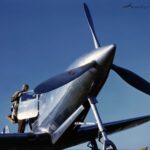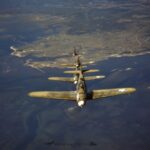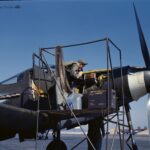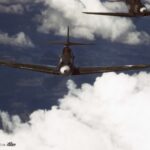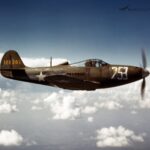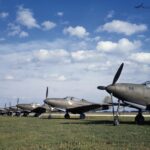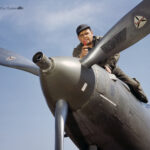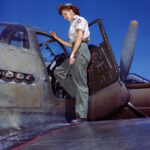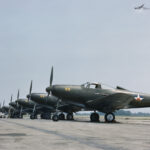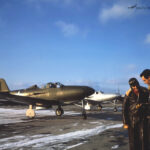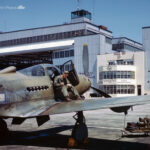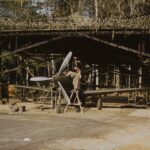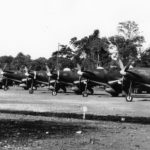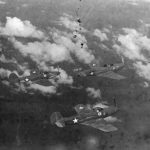YP-39
YP-39
P-39D 41-28360
P-39D 41-28360 and 255 41-38276
YP-39 – test version
P-39D loading ammunition
P-39D loading ammunition
P-39D 41-28360
P-39D 41-28360
P-39D 41-28360
P-39D 31st PG #26
Mounting of a camera
P-39 propeller blades
Female mechanic and open doors showing off all the cockpit
P-39C Airacobra of the 31st PG, yellow 22
K-25 Camera for daylight reconnaissance photography
P-39 loading wing ammunition
P-39C and YP-39 1941
P-39 Patterson Field
P-39Q Madden Field Panama
YP-39 40-32 “155 of 10th AB 1941
P-400 BW157 1942
P-400 BW164 “221”
Shark-nosed P-400 BW167 “White 6” of 67th FS, 347th Fighter Group arrive on Guadalcanal
YP-39 “155” of the 10th 10th Air Base Squadron 1941
P-400 at the 4th Air Depot in Townsville on 4 December 1942
Airacobras of the 40th PS, 31st PG being refuelled, 1941
P-39D “51” of the 8th PG “red air forces” during war games 1941
P-39C Airacobras of the 31st PG at Selfridge Field 1941
P-39C Airacobras of the 31st PG at Selfridge Field 1941 2
P-39D 41st PS, 31st Pursuit Group
Mechanics of the 37th Material Squadron of the 27th Air Base Group overhaul a Bell P-39C during war games in the Carolinas
P-39D of 31th Pursuit Group 1941
P-39C Airacobras of the 31st PG at Selfridge Field 1941 3
P-39C 31st PG in flight
P-39D “63” 8th Pursuit Group, 1941
Airacobras on a snowy airfield 1941/42
Mechanics of the 37th Material Squadron of the 27th Air Base Group overhaul Allison liquid-cooled motor of a P-39D from the 35th Pursuit Squadron, 8th PG during war games in the Carolinas
P-39 “52” war games in the Carolinas 2
P-39D of the 31st PG “white air forces” during war games in the Carolinas 1941
Mechanics Service P-400 at Airfield near Port Moresby 1942
P-400 BW134 “M” of the 80th FS over New Guinea fall 1942
37th Material Squadron Repair Wings of P-39D 1941
Bell P-400 at Port Moresby at Rogers Drome 1942 5th AF
8th PG pilots scramble Mitchell Field November 1941
P-39N-1 42-9719 of the 118th TRS, Aiken, SC 1943
Airacobras of the 82d Reconnaissance Squadron (Fighter)
P-39F “white 66” from 82nd RS, New Guinea May 1944
Airacobra 41-38283 July 1943
P-39Q of the 82d Reconnaissance Squadron (Fighter), New Guinea 28 May 1944
P-400 “white 22” of the 67th Fighter Squadron on Henderson Field, Guadalcanal 1942
XP-39E with laminar flow wing
P-39K Airacobra of the 12th Fighter Squadron in flight
Airacobra 41-38283 July 1943
Airacobra 41-38283 July 1943
Bell P-39F Airacobra 41-7246 on the ground
P-39Q of the 82d Reconnaissance Squadron (Fighter), 71st Reconnaissance Group, New Guinea 28 May 1944
P-400 of the 80th Fighter Squadron, 8th FG Turnbull Airstrip Milne Bay
Bell P-39Q Airacobra on the ground
American fighter aircraft with the engine installed in the center fuselage, behind the pilot, and driving a tractor propeller via a long shaft.
Design and Structure
Type: Single-seat Fighter
Wings:
- Configuration: Low-wing cantilever monoplane.
- Wing Section: NACA 0015 at the root and modified NACA 23009 at the tip.
- Structure: The center-section is integral with the forward fuselage, with tapering outer sections. The wings feature three spars: front, rear, and auxiliary, along with pressed and beaded aluminum ribs, Z-section spanwise stringers, and a flush-riveted smooth aluminum skin. Ailerons are fabric-covered metal frames, differentially controlled with modified Frise type nose balance and a Venturi-shaped slot. Includes controllable trimming-tabs and additional servo tabs.
Fuselage:
- Construction: Oval all-metal structure in two sections. The forward section includes main longitudinal beams and a horizontal upper deck, providing easy access to engine, cockpit, armament, and radio equipment. The aft section is a metal monocoque.
Tail Unit:
- Type: Cantilever monoplane, with all-metal fixed surfaces and fabric-covered movable surfaces. Trimming-tabs are controllable from the cockpit.
Landing Gear:
- Type: Retractable tricycle, with electrical retraction and emergency hand gear. Main wheels retract inwardly into the wings, while the castoring nose wheel retracts aft into the fuselage. Equipped with hydraulic suspension and multiple disc brakes.
Power Plant
- Engine: One 1,200 h.p. Allison V-1710-85 twelve-cylinder Vee liquid-cooled engine, mounted aft of the pilot’s cockpit. It drives a tractor airscrew through an extension shaft and a remote 2.23:1 reduction gearbox.
- Propeller: Aeroproducts three or four-blade hydraulically controlled constant-speed airscrew, 11 ft. 7 in. (3.54 m) in diameter.
- Cooling and Fuel Systems: Coolant radiator and oil coolers are located in the center-section, with air ducts and controllable exits. Fuel tanks, with a total capacity of 120 U.S. gallons, are in the outer wing sections, with provisions for an auxiliary droppable fuel tank.
Accommodation
- Cockpit: Enclosed, located over the leading-edge of the wing. It features two outward-swinging doors with emergency release hinge-pins and roll-down windows. The cockpit is protected with armor and has fume-proof bulkheads. It includes cabin heating, ventilation, and a bullet-proof windshield.
Armament and Equipment
- Guns:
- One 37 mm cannon firing through the gearbox and airscrew hub.
- Two .50 cal machine guns in the forward fuselage, synchronized to fire through the airscrew.
- Two .50 cal guns under the outer wings, firing outside the airscrew disc.
- Bomb: Capable of carrying one 500 lb. bomb under the fuselage.
- Other Equipment: Includes a remotely-controlled two-way radio and an antenna enclosed in the vertical fin’s leading-edge. Full electrical and oxygen systems are provided.
Dimensions
- Span: 34 ft. (10.37 m)
- Length: 30 ft. 2 in. (9.2 m)
- Height: 11 ft. 10 in. (3.63 m) to the top of the airscrew
- Wing Area: 213 sq. ft. (19.8 sq. m)
Weights and Loadings
- Empty Weight: 5,968 lbs. (2,709 kg)
- Loaded Weight: 8,052 lbs. (3,656 kg)
- Wing Loading: 37.76 lbs./sq. ft. (184.26 kg./sq. m)
Performance (P-39Q Variant)
- Maximum Speed: 385 mph (606 km/h) at 11,000 ft. (3,355 m)
- Climb to 15,000 ft. (4,575 m): 4.5 minutes
- Service Ceiling: 35,000 ft. (10,670 m)
- Range:
- 675 miles (1,080 km) at 240 mph (384 km/h) with external auxiliary tank.
- 1,475 miles (2,360 km) at 160 mph (256 km/h).
